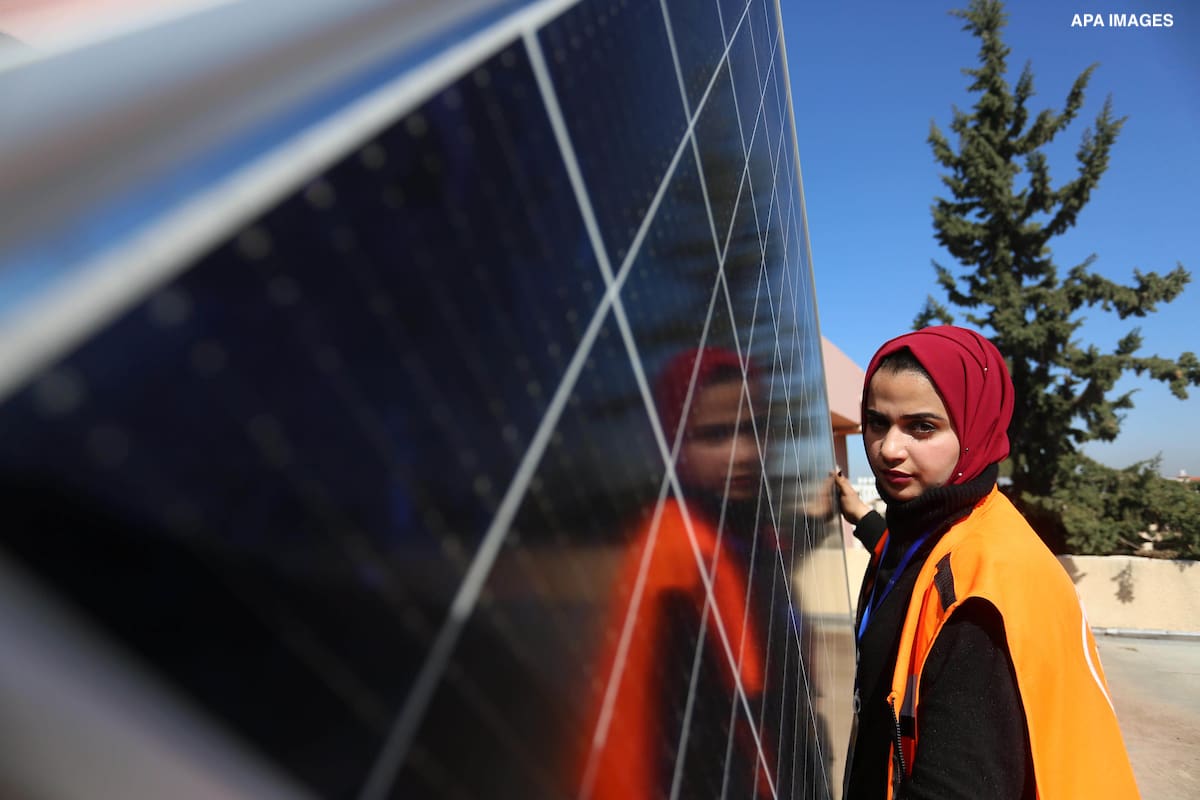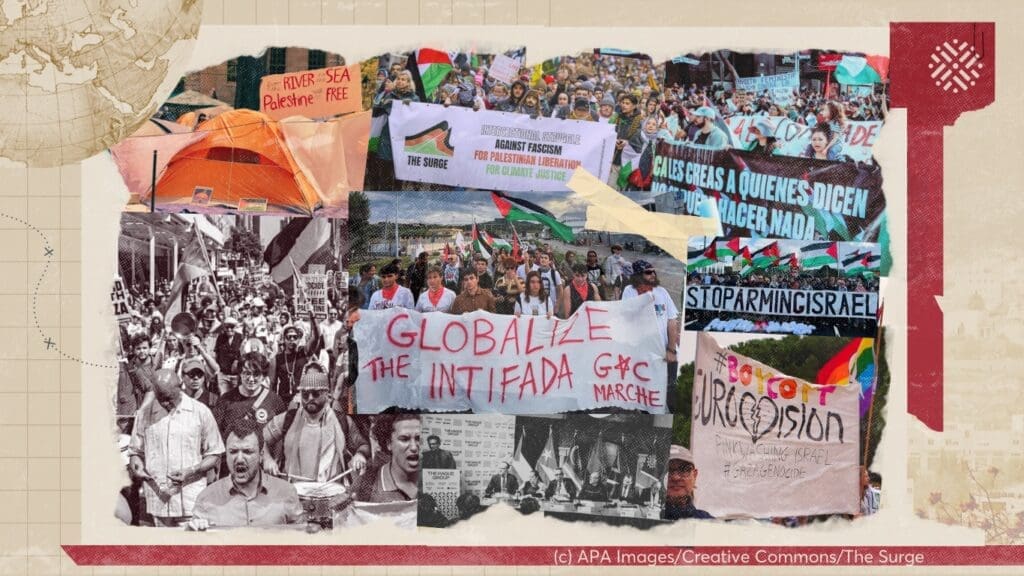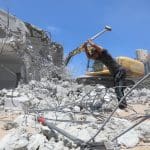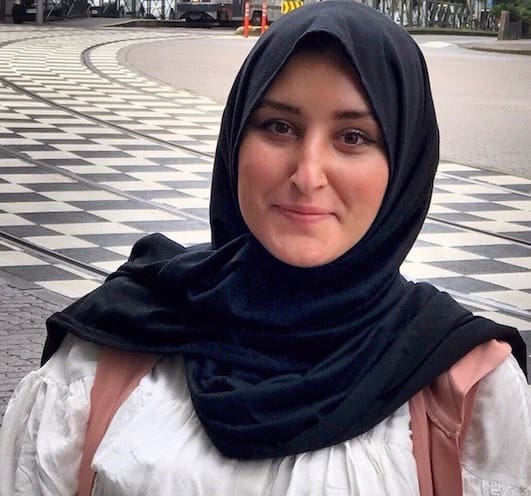
Executive Summary
Palestinians in Gaza are suffering from a worsening energy crisis due to the Israeli regime’s unrelenting siege. As a result, they have sought alternative sources of energy that are funded by donor aid, as well as governmental and private-sector initiatives. While these schemes can provide Palestinians with short-term solutions to alleviate their energy needs, they fail to confront the fundamental obstacles imposed by the Israeli siege, thus depoliticizing the energy crisis and perpetuating the status quo.
This policy brief contextualizes Gaza’s energy crisis within the Israeli regime’s siege in order to look more closely at the besieged enclave’s electricity crisis and the strategies Palestinians adopt to confront it, including solar energy technology. It argues that any attempt to adopt alternative sources of energy within the context of economic siege places undue burdens on Palestinian households that are already suffering from limited access to basic needs. It ends with policy recommendations for Palestinian leadership, as well as the international donor community and environmental activists, to promote Palestinian economic self-determination in Gaza.
Critically, the international community’s refusal to hold the Israeli regime accountable ensures the perpetuation of Palestinian reliance on donor aid for its basic needs, including energy. Indeed, and however essential this aid may be for Palestinians in Gaza, by continuing to sidestep Palestinian calls for sovereignty over their land and natural resources, and by continuing to shield Israel from accountability, donors do nothing more than entrench Palestinian oppression and energy poverty.
Access to electricity is particularly difficult for Palestinians in Gaza. In addition to the restrictions on electricity supply, the overall demand for electricity in Gaza is increasing with population growth, with households registering the highest percentage of electricity consumption. This is worsened by frequent outages, which hinder the ability of public-sector institutions to provide basic services related to water and waste management, healthcare, and education. The private sector is also impacted. If they manage to stay open, businesses are incurring increased operational costs for securing electricity from alternative sources during outages. This results in depleting profit margins and discouraging further investments in Gaza.
Moreover, there is a direct correlation between energy poverty and the perpetuation of gender inequality in Gaza. Indeed, shortage in electricity has a severe impact on household labor, for which Palestinian women, like women all over the world, are disproportionately responsible. Energy poverty in Gaza means that many women work even more hours in unpaid household labor—often with no electricity and in sweltering heat or bitter cold—leaving them with little or no discretionary time—a phenomenon known as time poverty. This in turn creates increased stress and pressure, often leading to mental health struggles.
However, Palestinians in Gaza have been adopting coping strategies for decades. This includes solar-powered technology to supply households with electricity and hot water. One of these strategies, known as solar photovoltaic (PV) technology, is gaining in popularity in Gaza, though with limited success due to affordability and accessibility. Indeed, in the unlikely event that the Israeli regime allows the entry of equipment necessary for PV technology, its installation and maintenance costs alone would be unaffordable for most Palestinians in Gaza.
The same is true of governmental and private-sector initiatives meant to provide Palestinians in Gaza with interest-free loans, some even payable in installments. For example, the Gaza Electricity Distribution Company launched a project offering solar system installation for households payable in monthly installments. However, the cheapest package is 6,956 NIS ($1,892) over 28 months, which is beyond the maximum amount public-sector employees reported they can set aside for solar energy systems—5,000 NIS ($1,360).
The discussion of solar energy adoption as a solution to the energy crisis in Gaza must be reframed from a technical issue to a political one with justice and liberation for Palestinians at its core:
- Palestinian leadership, environmental activists, and the donor community must focus their advocacy efforts on pushing for punitive measures against the Israeli regime, and promoting Palestinian political and economic sovereignty.
- The Palestinian Energy and Natural Resources Authority (PENRA) must extend its solar energy initiatives to marginalized communities in Gaza.
- Municipalities and local ministries must work with PENRA to integrate the design of diversified energy sources in urban planning and reconstruction projects in Gaza, including allocating governmental lands for solar energy projects.
- PENRA and other public authorities must push for private-sector provision of solar energy solutions.
- The Palestinian Central Bureau of Statistics and Palestinian energy research centers must: map and register all solar energy systems installed in Gaza to ensure official and reliable statistics; cover issues of gender, socioeconomic conditions, and household demographics, among others; and ensure that this data informs all green financing initiatives and solar energy projects implemented in Gaza.
Introduction
Since 2006, Palestinians in Gaza have suffered from a worsening energy crisis due to the Israeli regime’s unrelenting siege. As a result, they have sought alternative sources of energy that are funded by donor aid, as well as governmental and private-sector initiatives. While these schemes can provide Palestinians with short-term solutions to alleviate their energy needs, they fail to confront the fundamental obstacles imposed by the Israeli siege, thus depoliticizing the energy crisis and perpetuating the status quo.1
Addressing the complexities of the energy crisis in Gaza is beyond the scope of this policy brief. Instead, it contextualizes Gaza’s wider energy crisis within the Israeli regime’s siege in order to look more closely at the enclave’s electricity crisis specifically, as well as the strategies Palestinians adopt to confront it, including solar energy technology. As the analysis makes clear, any attempt to adopt alternative energy sources within the context of economic siege places undue burdens on Palestinian households that are already suffering from limited access to basic needs. The brief ends with policy recommendations for Palestinian leadership, as well as the international donor community and environmental activists, to ease the energy crisis in Gaza and contribute to Palestinians’ economic self-determination.
Energy Under Siege
Israel’s policy of depriving Palestinians from access to energy is multifaceted across colonized Palestine, causing chronic energy poverty. In Area C of the West Bank, the regime bans Palestinians from connecting to power grids and denies them permits to install solar energy systems. In 2018, it also threatened to destroy solar energy projects in Areas A and B—ostensibly under the governance of the Palestinian Authority (PA)—for not being licensed according to Israeli law. In Gaza, not only does the Israeli regime deprive Palestinians of energy resources, it also targets the only diesel-based power plant in what amounts to political vengeance, systematically devastating Gaza’s economy and Palestinians’ livelihoods.
This is particularly worrying given Palestinians’ increasing reliance on energy imported from Israel. Indeed, between 2010 and 2020, Palestinians in the West Bank and Gaza increased their imports of electricity from the Israeli regime by 56%, representing 91% of total imported electricity. This is 11 times greater than electricity purchases from the Palestine Electric Company in Gaza. In 2017, Palestinian households and businesses, as well as the Gaza Power Generating Company (GPGC), spent $769.7 million (22% of Gaza’s GDP) on imported energy sources from the Israeli regime, including petroleum, diesel, gasoline, liquid propane gas, and electricity, among others.
However essential donor aid may be for Palestinians in Gaza, the absence of a plan to orient these investments towards self-determination for the Palestinians guarantees the protraction of the Israeli siege Share on X
The supply of each source fluctuates based on prevailing political and economic conditions. For example, in 2017, the Israeli regime collectively punished Palestinians in Gaza following the PA’s refusal to pay energy bills. From a daily average of 120 megawatts (MW), Israel restricted its monthly supply of energy to Gaza to 70 MW per day during the last six months of 2017. Similarly, during its assault on Gaza in May 2021, Israel reduced its energy supply to Gaza to 86 MW per day.
Importantly, access to energy in Palestine—including imported energy sources such as fossil fuels, electricity, and renewable energy—is contingent on the stipulations of the 1994 Paris Economic Protocol (PEP), which ensures the Israeli regime’s control over the levers of the Palestinian economy. Indeed, clause 12 of the PEP conditions Palestinian imports of petrol to meet European and US fuel standards enforced in Israel. The PEP also stipulates that the difference between prices of petrol sold between 1948 territories, the West Bank, and Gaza should not exceed 15%. It has therefore become increasingly unaffordable for the PA to import fuel from other countries. As a result, Palestinians are paying the highest prices for energy in the region—despite consuming the lowest levels—which, in turn, exacerbates their financial burdens.2
The Vicious Cycle of Donor Aid
The international community’s refusal to hold the Israeli regime accountable ensures the perpetuation of Palestinian reliance on donor aid for basic needs. This includes energy resources that Israel blocks from Gaza and vital infrastructure that it destroys. Indeed, Israel has demolished donor-funded solar-power projects in Gaza’s industrial city and solar panels in Area C of the West Bank, yet donors continue to overlook these violations while pouring in aid to help Palestinians meet their humanitarian needs.
From 2006 to 2009, the EU provided the GPGC with fuel, while Qatar and Turkey offered grants to cover the cost of industrial diesel and the blue tax the Israeli regime imposes on Palestinian fuel purchases. And while the use of solar-powered energy has been steadily rising in Gaza as a result, 69.2% of the institutions that have adopted it since 2010 have indicated that it can only cover up to 20% of their energy consumption costs.
However essential donor aid may be for Palestinians in Gaza, the absence of a plan to orient these investments towards self-determination for the Palestinians guarantees the protraction of the Israeli siege. Ultimately, by continuing to sidestep Palestinian calls for sovereignty over their land and natural resources, and by continuing to shield Israel from accountability, donors do nothing more than entrench Palestinian oppression and energy poverty.
A Closer Look at the Electricity Crisis
Structural Issues
In 2020, 83.8% of the electricity supply in the West Bank and Gaza, and almost all its fuel demand, was imported from the Israeli regime. The rest was imported from the Palestinian Electricity Transmission Company (5.3%) and Jordan (2.6%). The remaining supply (8.3%) was purchased locally from the Palestine Electric Company through the GPGC. In Gaza specifically, electricity from GPGC constituted just 35% of purchased electricity in 2020, while the rest was imported from the Israeli regime.3 The besieged enclave’s electricity supply from the GPGC is contingent on the availability of funds to purchase diesel to power the plant. In 2021, the Israeli regime further restricted the entry of fuel to Gaza for a month following its May 2021 ceasefire with Hamas. Consequently, the GPGC could only operate at half capacity most of the time, producing an average of 65 MW per day.
Energy poverty in Gaza means that many women work more hours in unpaid household labor, leaving them with little or no discretionary time…this creates increased stress and pressure, often leading to mental health struggles Share on X
In addition to the restrictions on electricity supply, the overall demand for electricity in Gaza is increasing with population growth. Households register the highest percentage of electricity consumption (60.69%) compared to the industrial, transport, and commercial sectors. In 2021, while the daily average demand for electricity was 500 MW, the average supply was only 190 MW (120 from Israel and 70 from the GPGC), resulting in a deficit of 310 MW. This deficit is a chronic crisis affecting almost all Palestinian households in Gaza.
The electricity crisis is worsened by frequent outages, which hinder the ability of public-sector institutions to provide basic services related to water and waste management, healthcare, and education. For example, wastewater treatment plants in Gaza are often unable to process sewage due to electricity shortages, resulting in a significant daily amount of partially treated water being dumped into the Mediterranean Sea, threatening marine life and Gaza’s vital fishing industry.
Healthcare provision is also severely impacted by power shortages. Indeed, hospitals in Gaza are often forced to postpone non-emergency surgeries, with waiting times reaching 16 months in 2021 compared to three months in 2005. Educational institutions are likewise impacted; this was particularly acute during the COVID-19 pandemic, when frequent power outages left teachers unable to use classroom technologies and many students were forced to study by candlelight.
The electricity crisis is also impacting the private sector. Some businesses have been forced to scale down operations or cease operating altogether. Others have reported a 30% increase in operational costs for securing electricity from alternative sources during outages. This has resulted in depleting profit margins and discouraging further investments in Gaza’s private sector. For workers, the situation is even more precarious, with many either forced to accommodate their working hours to the electricity schedule in businesses and factories, or to accept reductions in their daily wages due to shortened working hours.
Disproportionate Effects on Women
The structural issues outlined above also highlight the direct correlation between energy poverty and the perpetuation of gender inequality in Gaza. For example, some companies exploit the crisis to justify refusing to employ women under the pretext that they would not be able to work night shifts in the event of a power outage during the day. This is due to the patriarchal expectation that women in the labor force should work shorter hours and only during the daytime.4
The shortage in electricity also has a severe impact on household labor, for which Palestinian women, like women all over the world, are disproportionately responsible. Indeed, energy poverty in Gaza means that many women work even more hours in unpaid household labor, leaving them with little or no discretionary time—a phenomenon known as time poverty. In turn, this creates increased stress and pressure, often leading to mental health struggles.
Furthermore, many women rely on homemade food processing techniques, such as cheese production. Frequent electricity outages damage electrical appliances needed for these techniques, leading to spoilage and unaffordable repair costs that place serious financial burdens on the family and home-based businesses. In addition, because of the risks of food-born diseases that can result from perishable foods not properly stored during lengthy electricity outages, women are often forced to cook all the food to avoid spoilage. As a result, they are often compelled to rely on canned foods to feed their families, or to cook and bake using wood, exacerbating health and environmental problems.
Moreover, electricity is vital in helping Palestinians in Gaza navigate the worsening climate crisis, which is causing extreme temperatures. As a result, Palestinians are increasingly relying on electrical appliances, such as fans and air conditioning units, to alleviate the stifling heat in the summers, and on heating units to survive the bitter winter cold. Living under these climate conditions with limited electricity affects women in particular, as they generally carry the burden of caring for their homes and families, especially children and older adults. Ultimately, while all Palestinians in Gaza are suffering from the consequences of energy poverty, the effects on women are undoubtedly disproportionate due to prevailing gender inequalities.
Palestinian Coping Strategies
A 2021 study found that the monthly energy bill for half of the sampled Palestinian households in Gaza ranged between 150-300 NIS ($40-80), amounting to one-fifth of Gaza households’ average monthly income of 1,260 NIS ($342). As a result, Palestinians in Gaza have been developing methods to conserve electricity, allowing them to shrink their consumption by half that of Palestinian households in the West Bank.
Palestinians in Gaza are no strangers to solar-powered energy. Thanks to a daily average of eight hours of sunlight, 88% of families in Gaza owned solar thermal water heaters in 2004, a practice they adopted in the 1970s. While more recent figures on the scale of solar water heater use in Gaza are not available, in 2015, 56.5% of Palestinian households in the West Bank and Gaza used solar water heaters; in 2017, researchers found that solar water heaters saved Palestinians in Gaza 24.8% of their annual electricity bills.
Solar Photovoltaic Energy as an Alternative to Electricity
Since 2013, some Palestinians in Gaza who can afford to do so started adopting solar photovoltaic (PV) technology, either by connecting to an existing electricity grid (on-grid system), through a hybrid model, or entirely off-grid. Unlike solar thermal panels, which convert solar radiation into heat, PV technology converts sunlight to electricity, thus allowing households to power electrical appliances in addition to heating water. Although existing estimates about the contribution of PV technology to the electricity supply in Gaza are unreliable, researchers were able to determine that the number of PV systems installed in Gaza increased from 591 in 2015 to 8,760 in 2019, while solar panel surface space increased from 115 square meters in 2012 to 20,000 square meters in 2019.5
The discussion of solar energy adoption as a solution to the energy crisis in Gaza must be reframed from a technical issue to a political one, with justice and liberation for Palestinians at its core Share on X
Despite its potential, PV technology is costly. The price of installing an off-grid PV system of one kilowatt (KW) is between $1,000-2,500, excluding maintenance costs. Such systems cover household illumination, while operating other electrical devices such as fridges, fans, and washing machines requires a larger capacity of three KW at a cost of $3,000-5,000. By contrast, one KW of an on-grid system—widely used in the West Bank—ranges
between $850-1,000.6
Beyond costliness, the Israeli regime has sporadically restricted the entry of materials needed to install solar energy equipment over the past two decades. Moreover, its successive attacks on Gaza have destroyed necessary infrastructure for PV system installation, including residential buildings needed to house a rapidly expanding population, expected to reach 3.1 million in 2030. Combined with diminishing land and roof space, these realities render it extremely challenging for most Palestinians in Gaza to consider adopting PV technology.
Indeed, Palestinians in Gaza generally support the use of solar energy as a means of reducing household expenditures and coping with power outages. However, they point out that accessibility and affordability are the main obstacles to doing so. For example, solar energy suppliers indicate that while donor aid has largely covered the costs of PV system installations in marginalized communities in Gaza, the systems operate at minimal capacities (one KW), only sufficient for lighting. Moreover, public-sector employees working in the health sector indicated that the maximum amount of money they can set aside for solar system installation is 5,000 NIS ($1,360), which is less than the amount needed to purchase one KW.
Access to alternative energy sources, especially electricity, is thus a costly luxury. In a society fraught with increasing socioeconomic divisions, many cannot afford the expenditure. Instead, families in villages and refugee camps depend on candles and gasoline stoves to power their households during outages—cheaper alternatives that can be hazardous and life-threatening. Indeed, between 2012 and 2022, 35 Palestinians in Gaza were killed, and 36 injured—mostly children and women—due to fires caused by candles and/or other open flames.
Governmental and Private-Sector Initiatives
As part of its strategic plan for 2020-2030, the Palestinian Energy and Natural Resources Authority (PENRA) ambitiously set out to produce 500 MW of power by 2030, 80% of which would be produced by solar power at a cost of $650-734 million. The PA also issued decrees in 2015 and 2017 to encourage private-sector investment in renewable solar energy. These decrees provided investment and tax incentives to companies generating electricity from renewable sources such as feed-in tariffs and net metering (only the latter is implemented in Gaza).
However, the Israeli siege and the political division between Fatah and Hamas create disparity in implementing these green financing initiatives in Gaza. Indeed, initiatives by PENRA and private companies like the Palestine Investment Fund to encourage household adoption of solar energy have mainly extended to the West Bank. As an example, SUNREF, an EU-sponsored project, provided 25 million euros in interest-free loans to private-sector companies to invest in renewable energy between 2017 and 2021;7 Gaza-based companies only received around 6% of these loans.8 As a result, the adoption of solar-powered energy technology in Gaza has largely been limited to healthcare facilities, state institutions, and private businesses that can afford the installation and operational costs.
But extending loans to households would not solve the problem. The Gaza Solar Revolving Fund, launched by the World Bank and PENRA, is an initiative aimed at providing small businesses and households with interest-free loans. However, the political division between Fatah and Hamas continues to alienate many Palestinians from their leadership, especially due to government cuts to public employees’ salaries. As a result, the Gaza Solar Revolving Fund initiative, like others, has seen low consumer buy-in, even with the option to pay in installments.
Indeed, the Gaza Electricity Distribution Company also launched a project offering solar system installation for households payable in monthly installments. However, the cheapest package is 6,956 NIS ($1,892) over 28 months, which is beyond the maximum amount public-sector employees reported they can set aside for solar energy systems. More companies have followed suit, providing installment payment schemes to encourage consumer buy-in with limited success.
Moreover, the existing requirements for qualifying for green financing—including proof of employment, a regular salary, and a registered bank account—mean that few Palestinians in Gaza can apply, leaving the majority reliant on the Israeli regime and/or donor aid for access to electricity. This highlights the critical gap between private sector, donor, and governmental policies, and the needs of the Palestinian people in Gaza. Despite the initiatives implemented by the PA to alleviate energy poverty in Gaza, they have been limited in scope and implementation.
Recommendations
It is imperative to understand the rights of Palestinians in Gaza to access energy within the contexts of the Israeli siege, the Palestinian political divide, and donor complicity. The discussion of solar energy adoption as a solution to the energy crisis in Gaza must therefore be reframed from a technical issue to a political one, with justice and liberation for Palestinians at its core:
- Palestinian leadership, environmental activists, and the donor community must focus their advocacy efforts on pushing for punitive measures against the Israeli regime, and promoting Palestinian political and economic sovereignty.
- PENRA must extend its solar energy initiatives to marginalized communities in Gaza, which would require coordination between Palestinian political leaders. This includes encouraging investment in community-based solar energy systems and pushing municipalities to work in conjunction with PENRA to incentivize households to transition to solar energy through offering tax exemptions.
- Municipalities and local ministries must work with PENRA to integrate the design of diversified energy sources in urban planning and reconstruction projects in Gaza. This includes allocating governmental lands (including waqf lands) for the development of solar energy systems, especially in areas with limited electricity infrastructure.
- PENRA and other public authorities must push for private-sector provision of solar energy solutions. This includes offering government subsidies and tax incentives, as well as using publicly owned lands for solar energy projects.
- In order to ascertain the scope of the ongoing energy crisis, the Palestinian Central Bureau of Statistics and Palestinian energy research centers must: map and register all solar energy systems installed in Gaza to ensure official and reliable statistics; cover issues of gender, socioeconomic conditions, and household demographics, among others; and ensure that this data informs all green financing initiatives and solar energy projects implemented in Gaza.
- To read this piece in French, please click here. Al-Shabaka is grateful for the efforts by human rights advocates to translate its pieces, but is not responsible for any change in meaning.
- Meanwhile, the Israeli regime continues to advance its greenwashing efforts, including at the regional level. Solar energy projects are part of these efforts, with Israel standing to gain up to 1.6 billion NIS ($435 million) through them.
- Gaza’s electricity is derived from three main sources: electricity lines from the Israeli regime with a supposed capacity of 120 MW per day; electricity lines from Egypt with a capacity of 30 MW per day; and electricity supplies from the diesel-powered GPGC, with a capacity of 140 MW per day.
- This information is based on an interview the author conducted with an expert on women’s employment in the private sector in Gaza.
- The private sector (including manufacturing companies, hospitals, large supermarkets, and so on) and individual Palestinian households in Gaza are adopting solar PV technology at the highest rate.
- This information is based on interviews the author conducted with different stakeholders, including solar energy experts and suppliers.
- SUNREF II, launched in 2022, has pledged 50 million euro in green grants.
- This information is based on interviews conducted with PENRA authorities and private-sector solar energy suppliers.












